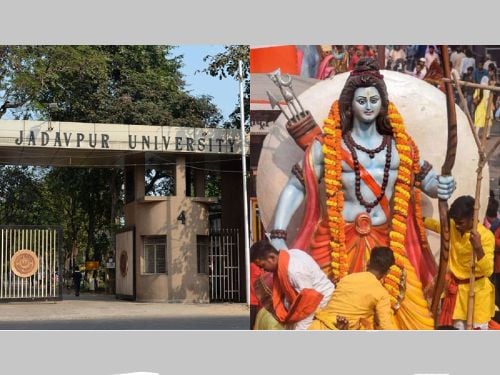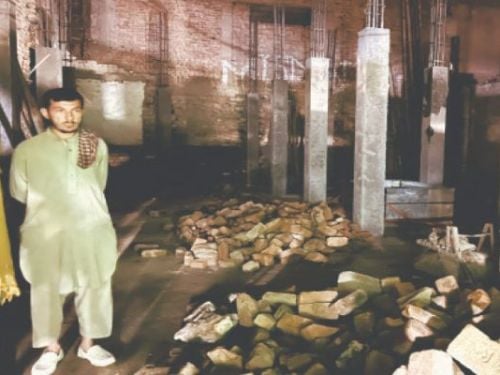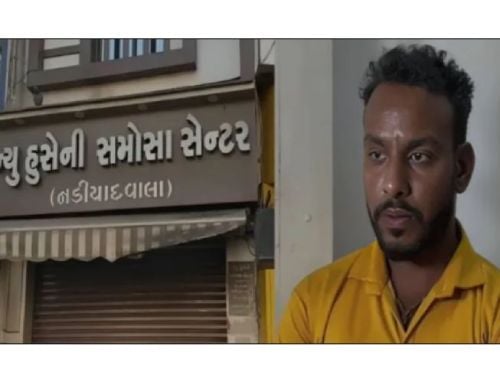A Christian clergy in Manipur is running a bizarre drug de-addiction centre by shackling the inmates with padlocks and manacles.
The rehabilitation centre named Gamnuam Christian Home located in Churachandpur, about 65 kilometres south of Imphal, was set up in 1987 and claims to have reformed close to 2,000 drug addicts.
"Our method of reforming addicts is unique in the sense that we preach the tenets of the Bible and help them get rid of their habit of drug abuse," Pavkholian Dousel, the home’s founder, said.
Some 80 addicts are currently lodged at the home with a majority of them chained on their ankles and padlocked.
"You require padlocks and even chains to keep them here or else they would flee. Initially they find the whole process a bit harsh, but they soon adept to the situation and gradually manage to kick the habit of taking drugs," Dousel said.
Manipur lies on the edge of the heroin-producing "Golden Triangle" of Laos, Myanmar and Thailand and independent estimates have put the number of regular intravenous drug users in the State at close to 200,000 – a key cause of HIV infection here.
Authorities in the Northeast fear the disease may further spread because of the region’s acute drug problem.
The Northeast has been declared as one of India’s high-risk zones with close to 100,000 people infected with HIV. Manipur with a population of 2.24 million account for about 20,000 HIV-positives although unofficial estimates put the figure in the State at closer to 35,000. The district of Churachandpur is the worst hit by HIV/AIDS in Manipur.
Despite the controversial chaining of addicts, locals in the area support Dousel’s method of reforming drug users with a mix of spirituality and force.
"Parents and guardians keep their children here and ask us to chain them so that they cannot escape. But they want them to be reformed at any cost," Dousel said.
Inmates at the rehab centre admit the regime is tough. "I wanted to end my life after being chained like a mad elephant in the initial few days. But then it helped me give up drugs after sometime," a young addict who was brought to the centre a year back said requesting anonymity.
Once an addict comes to terms with the weird methods, the Home engage the inmates in making noodles, training in carpentry and tailoring, besides a daily routine of singing gospel songs.
But the chaining of addicts has come in for severe criticism from frontline healthcare groups.
"This is a horrendous method of de-addiction which is unacceptable and weird in this modern world. How can you reform an addict by chaining him," Jiban Mala, head of the Kripa Foundation, a leading drugs de-addiction centre in Imphal, said. Rights groups in the State are also trying to stop the bizarre practice.
"I went to the Home once and saw addicts being chained and caged. There is a need to sensitise the community in the area to prevent addicts from being virtually tortured in the name of reforming
them," Khaidam Mani Singh, a noted rights campaigner, said.
Most of the inmates are people of the Kuki tribe, who are predominantly Christians. There were some complaints filed by
individuals and groups against the Home for alleged violation of human rights.
"We shall look into the matter and get a report on the Home’s activities," Manipur Health Minister Nanda Kumar said.

 Jadavpur Univ revokes permission to celebrate Ram Navami on campus after granting it
Jadavpur Univ revokes permission to celebrate Ram Navami on campus after granting it Andhra Pradesh: Farooq kills mentally challenged Hindu man for insurance money
Andhra Pradesh: Farooq kills mentally challenged Hindu man for insurance money Pakistan: Ancient Hindu temple in Khyber Pakhtunkhwa demolished for commercial complex
Pakistan: Ancient Hindu temple in Khyber Pakhtunkhwa demolished for commercial complex UK: Over 50 children were sexually abused by paedophile catholic monks for decades
UK: Over 50 children were sexually abused by paedophile catholic monks for decades Bihar: Goddess Bhagavati Temple in Araria vandalised and deities damaged
Bihar: Goddess Bhagavati Temple in Araria vandalised and deities damaged Vadodara: Beef supplier Imran Qureshi arrested in beef-stuffed samosa case
Vadodara: Beef supplier Imran Qureshi arrested in beef-stuffed samosa case